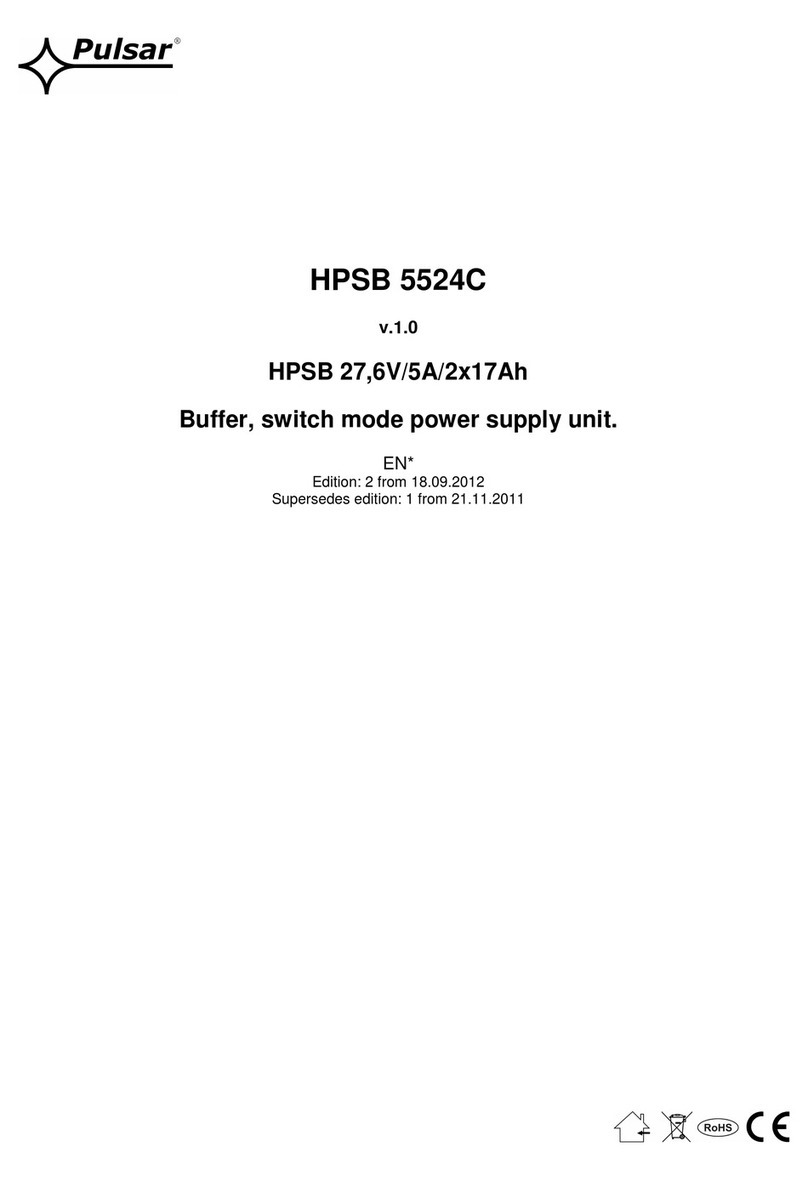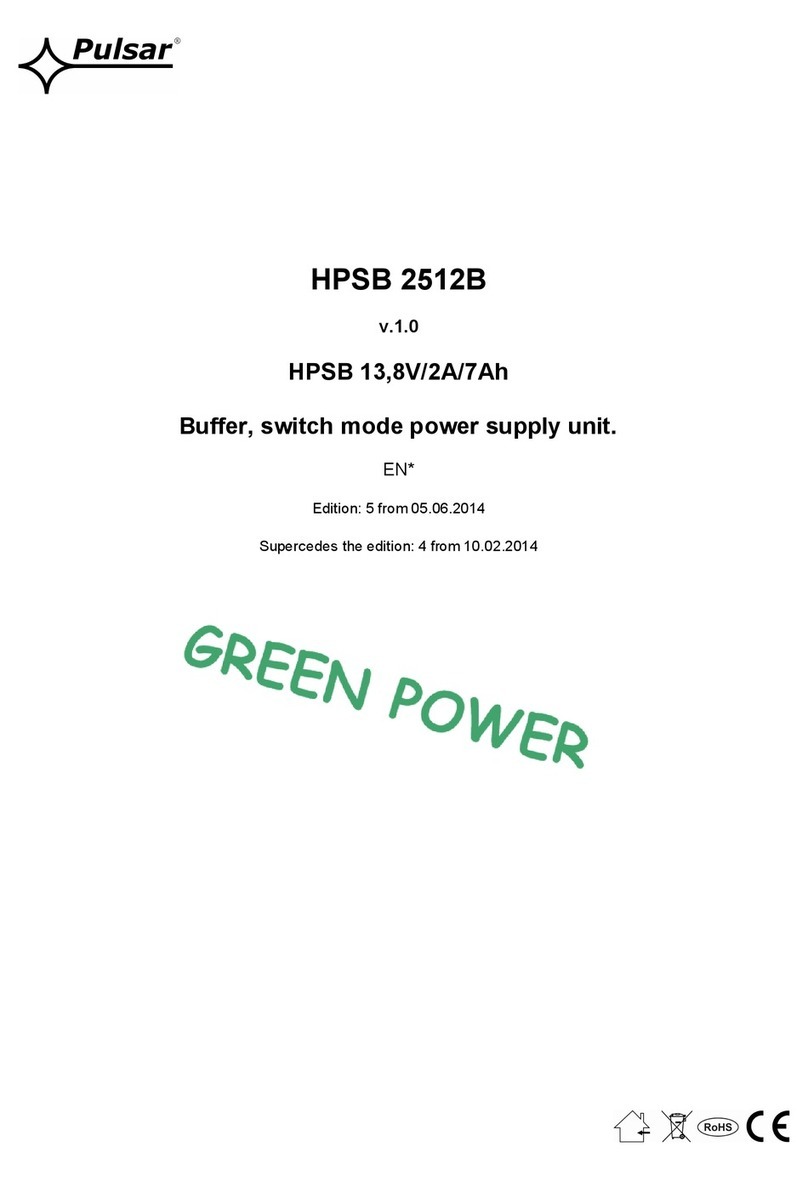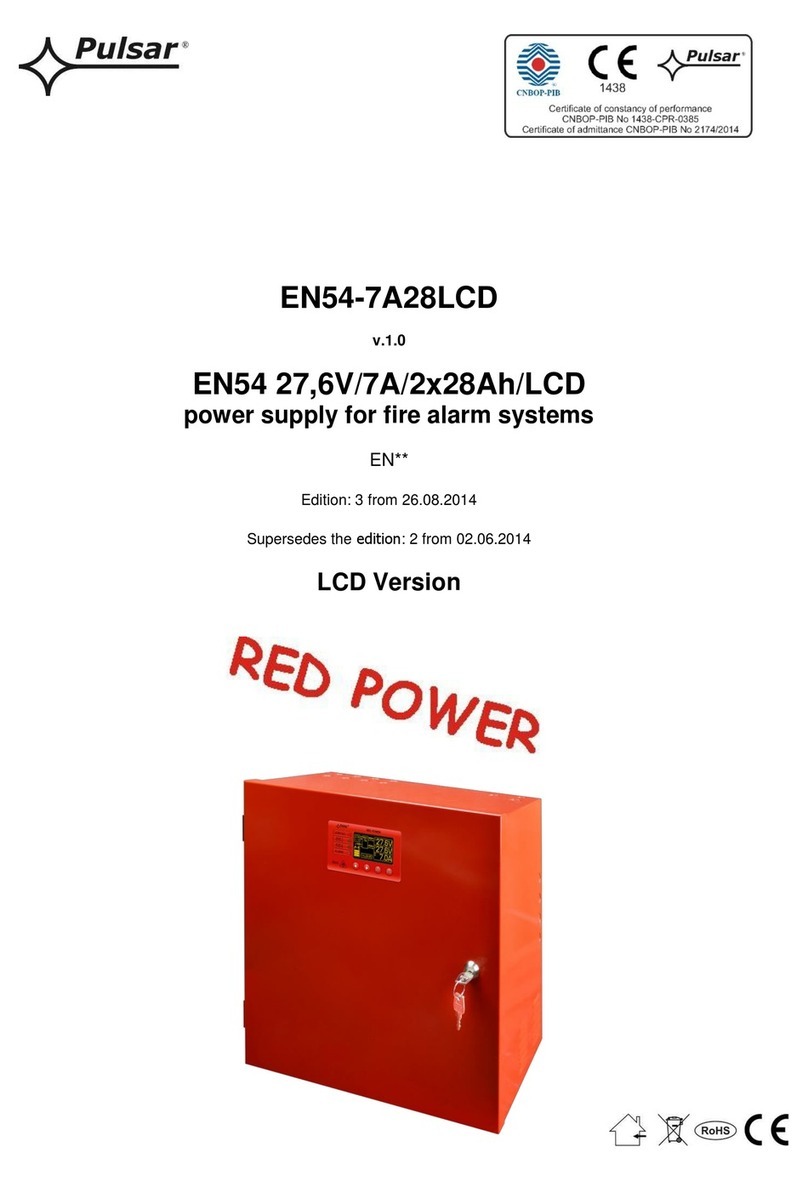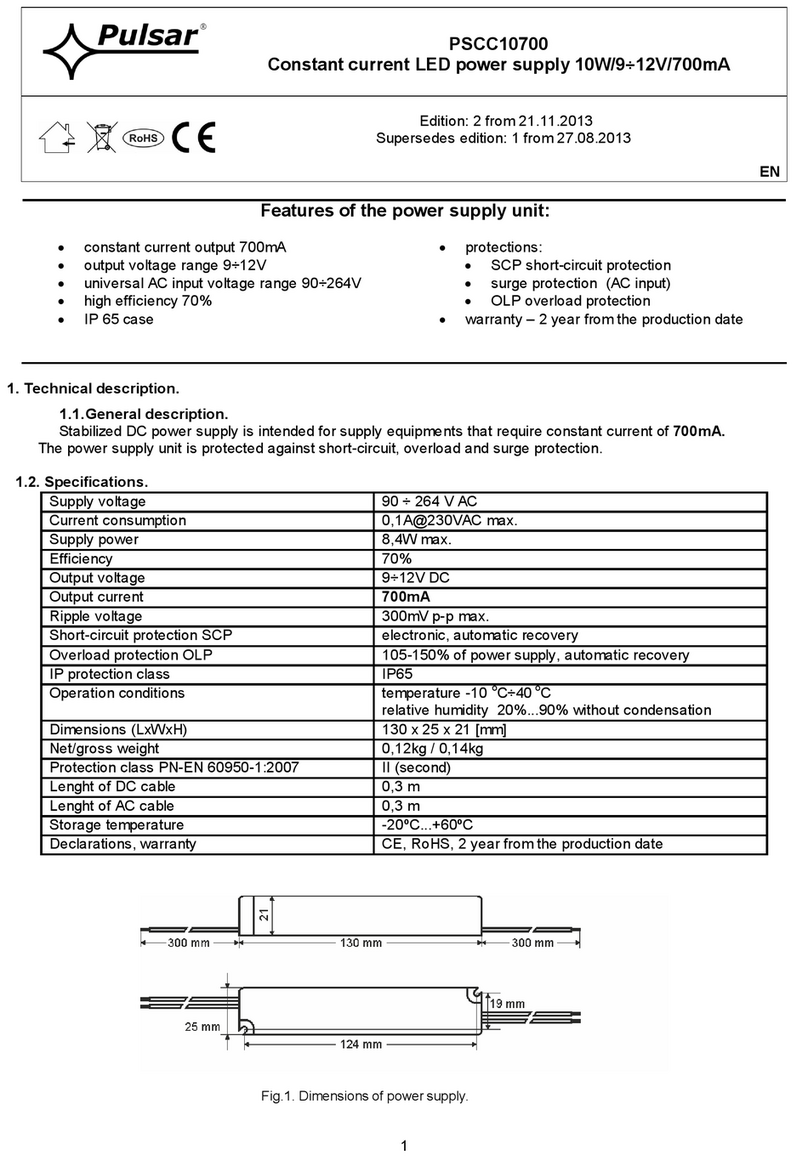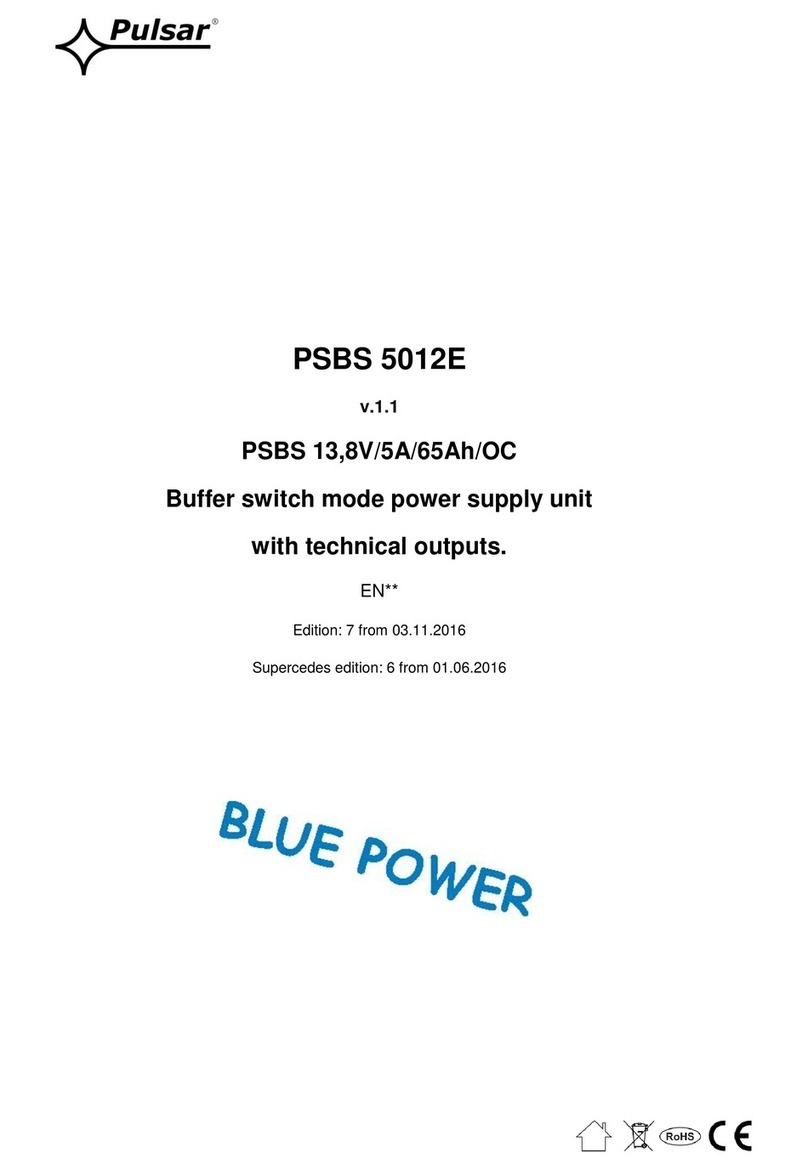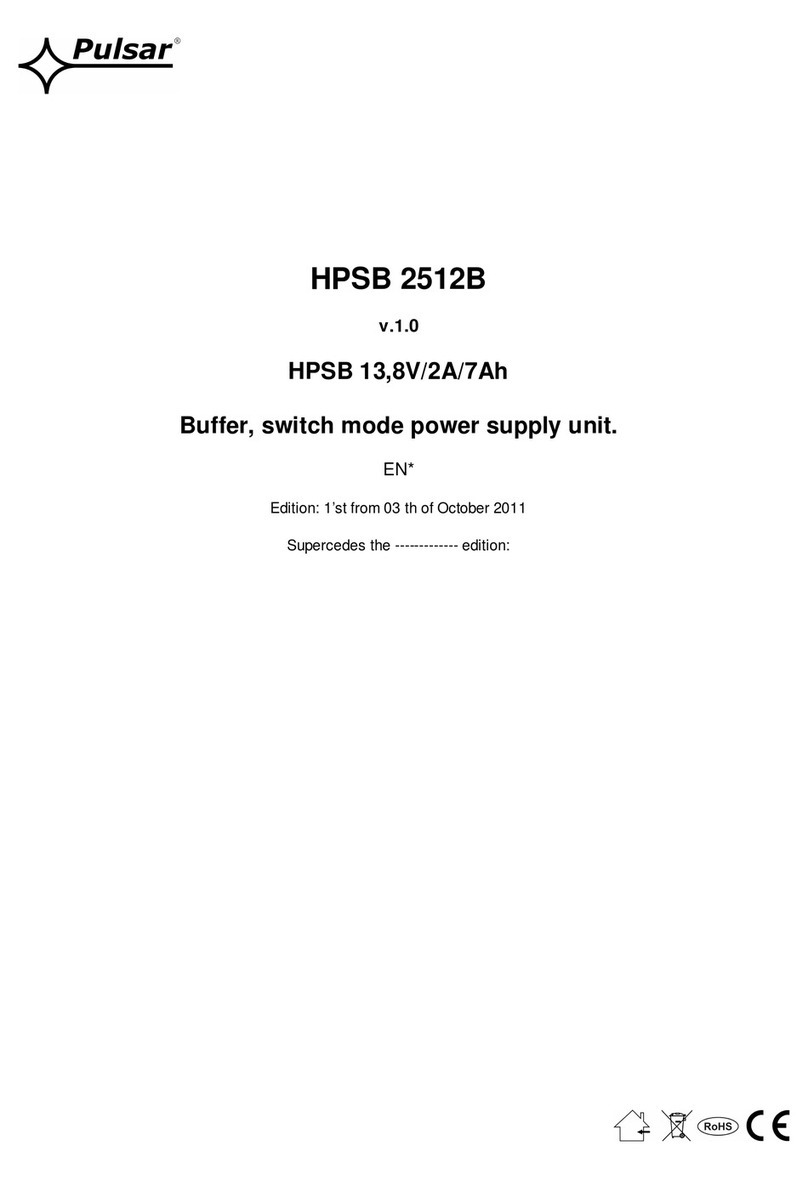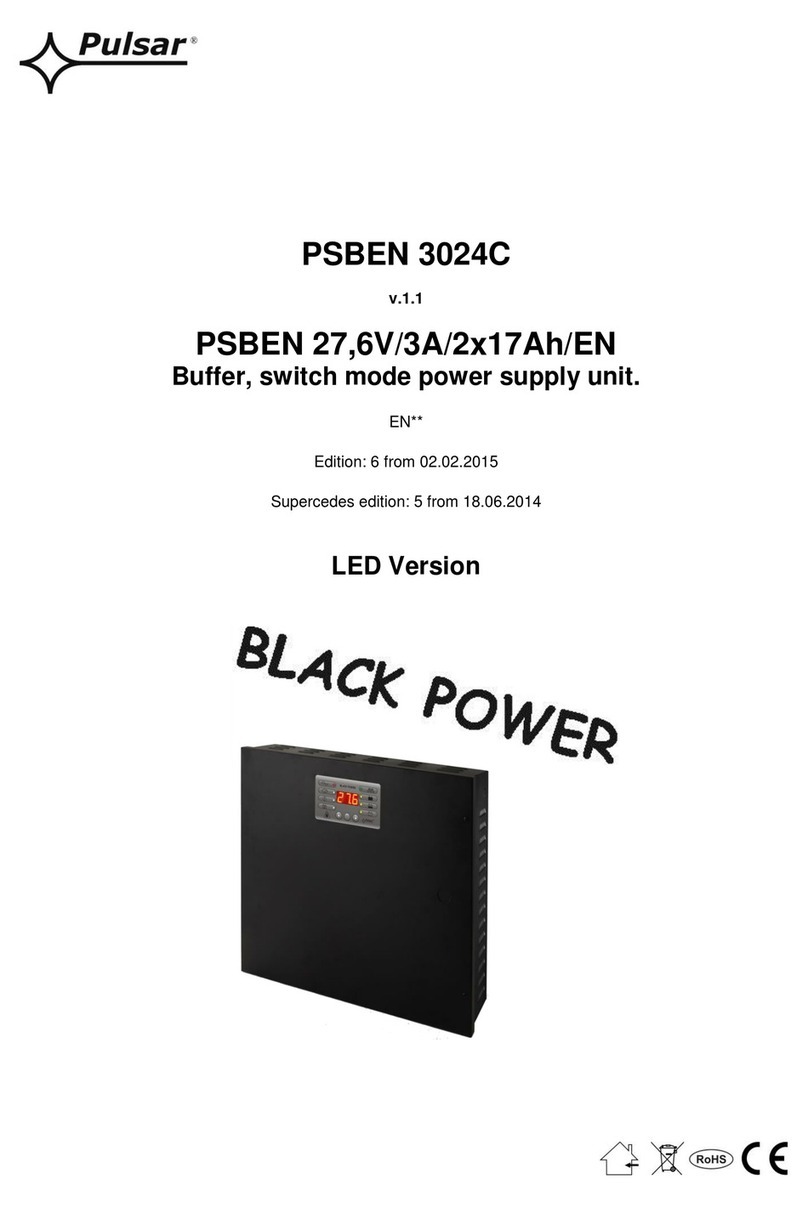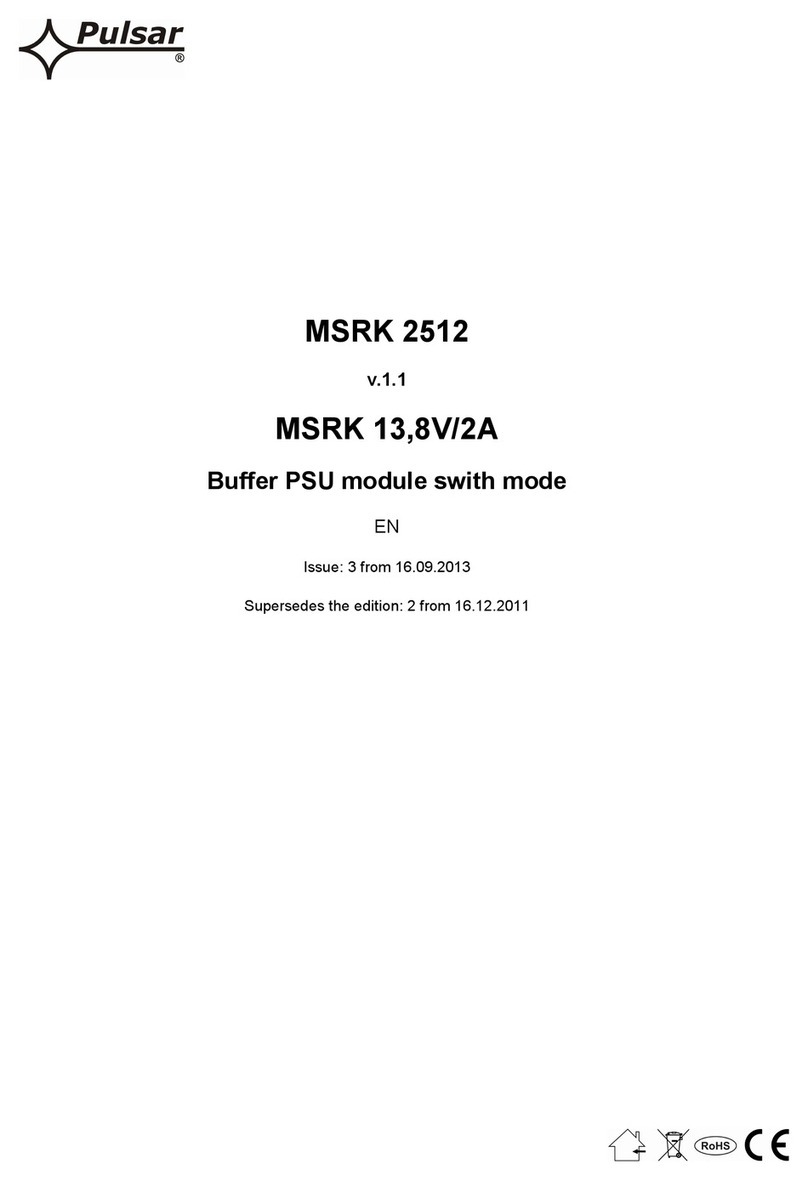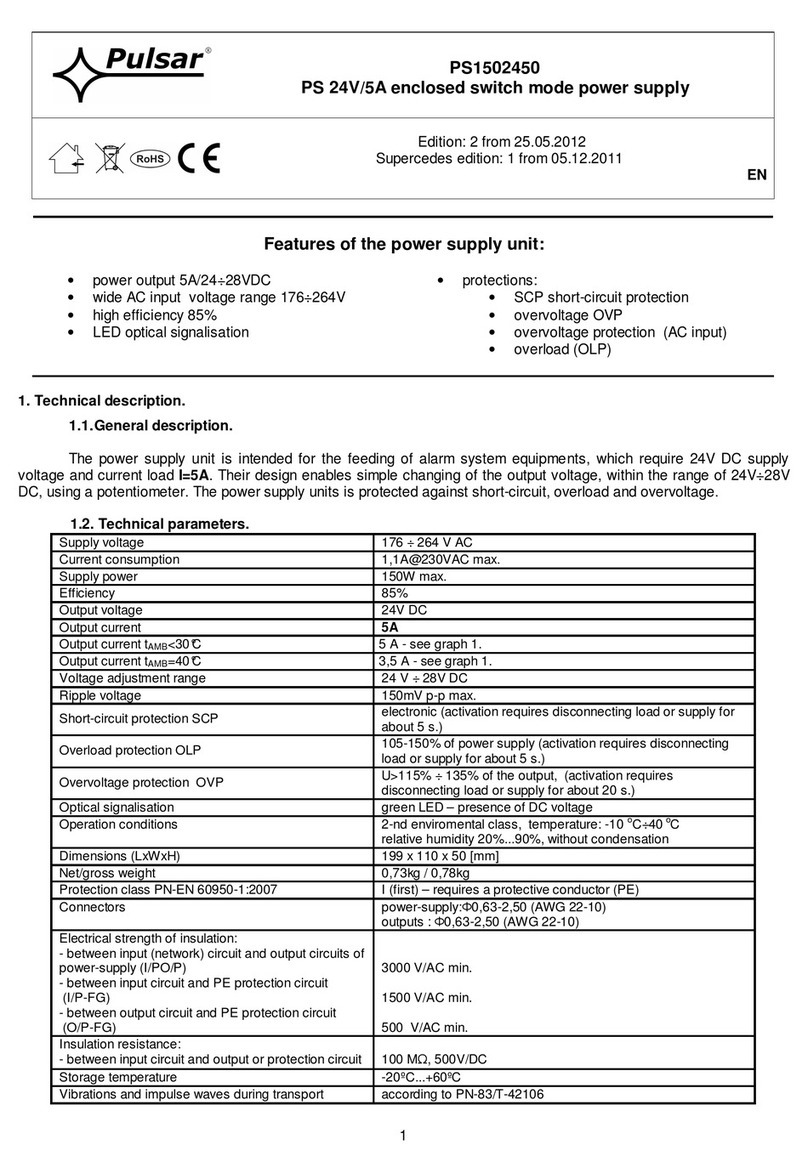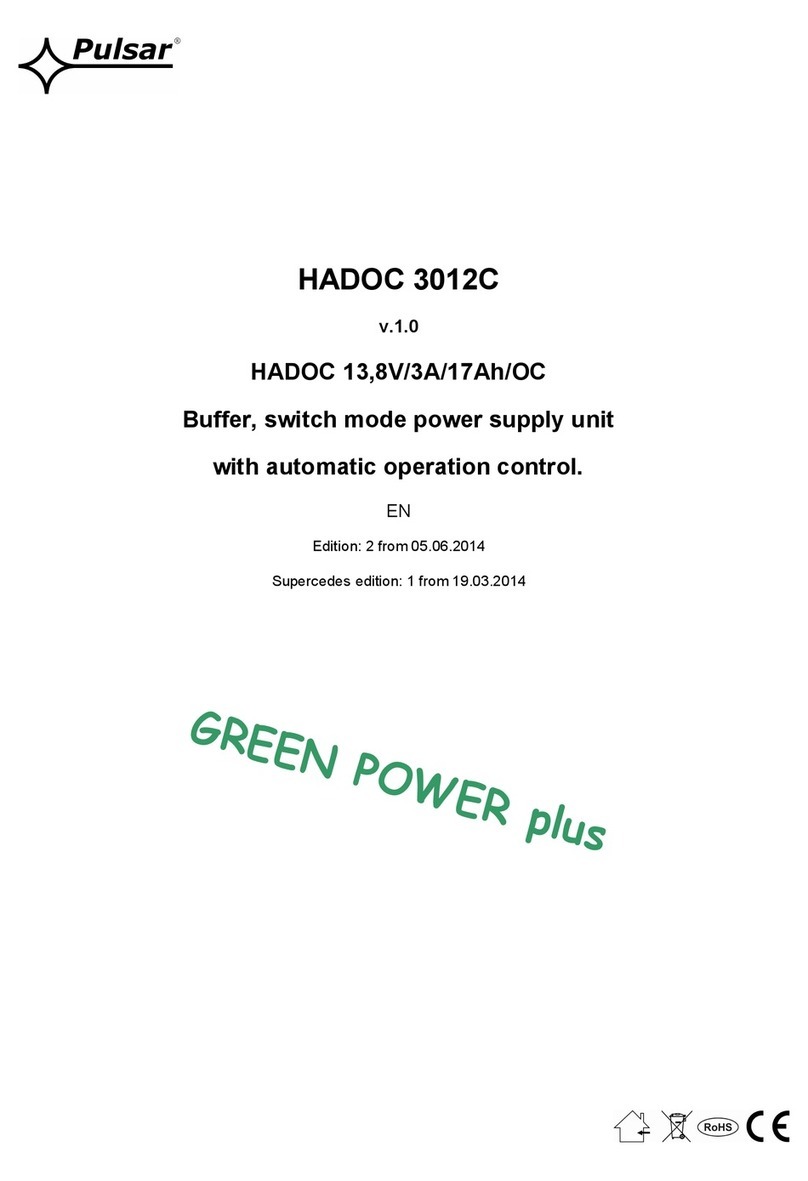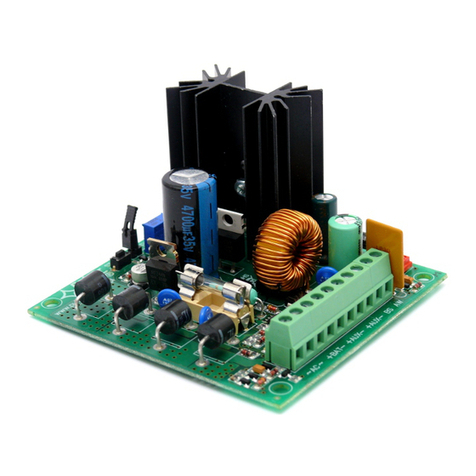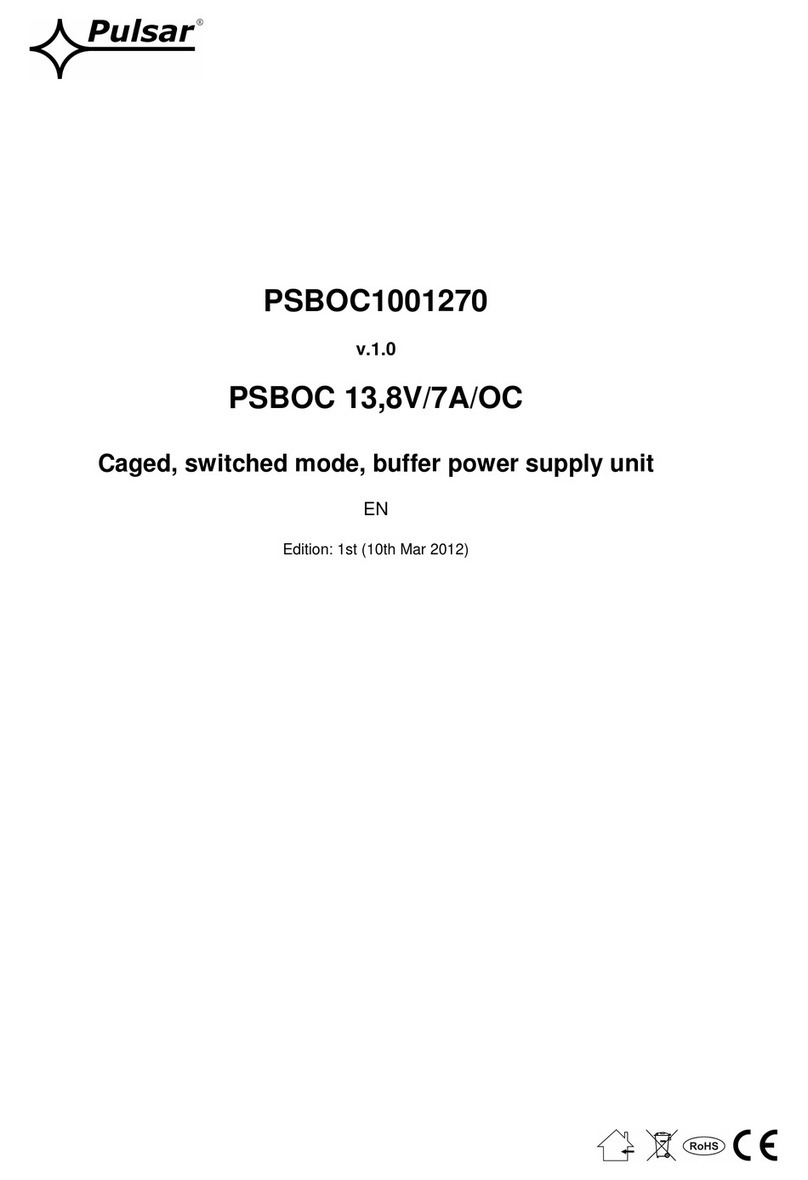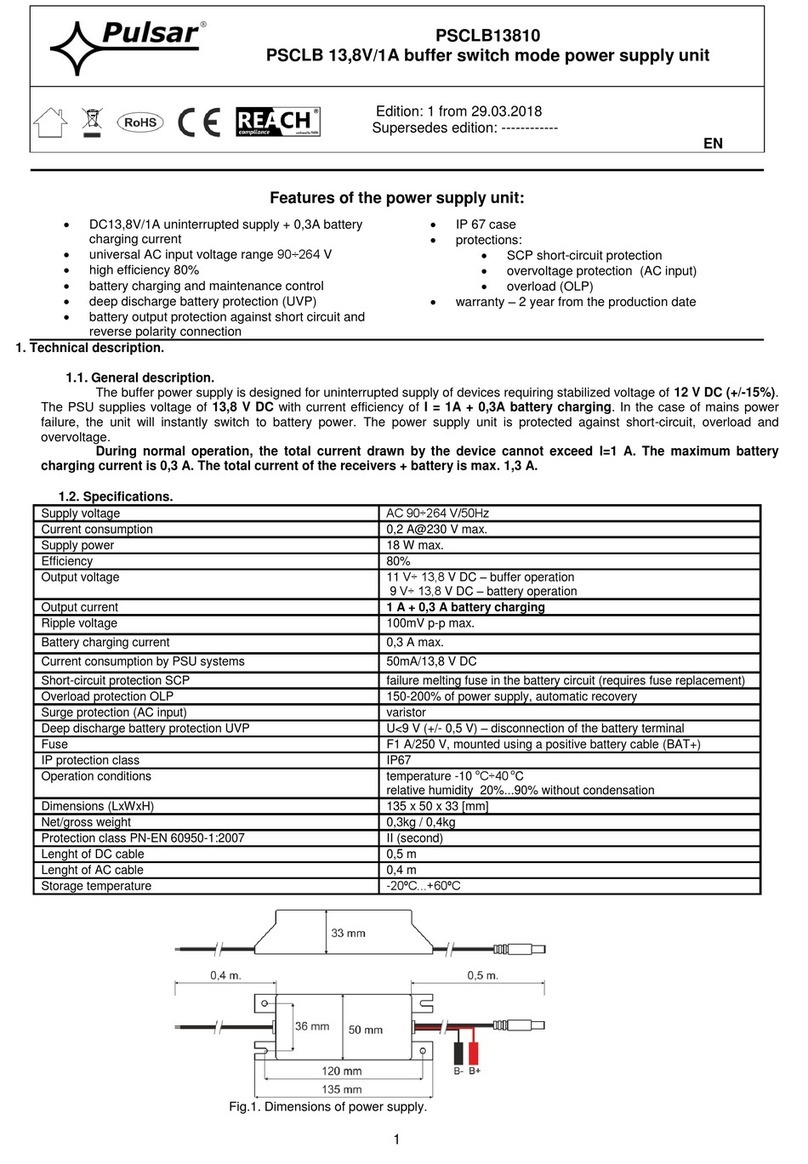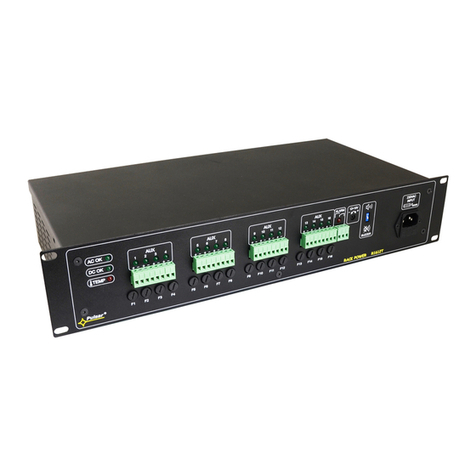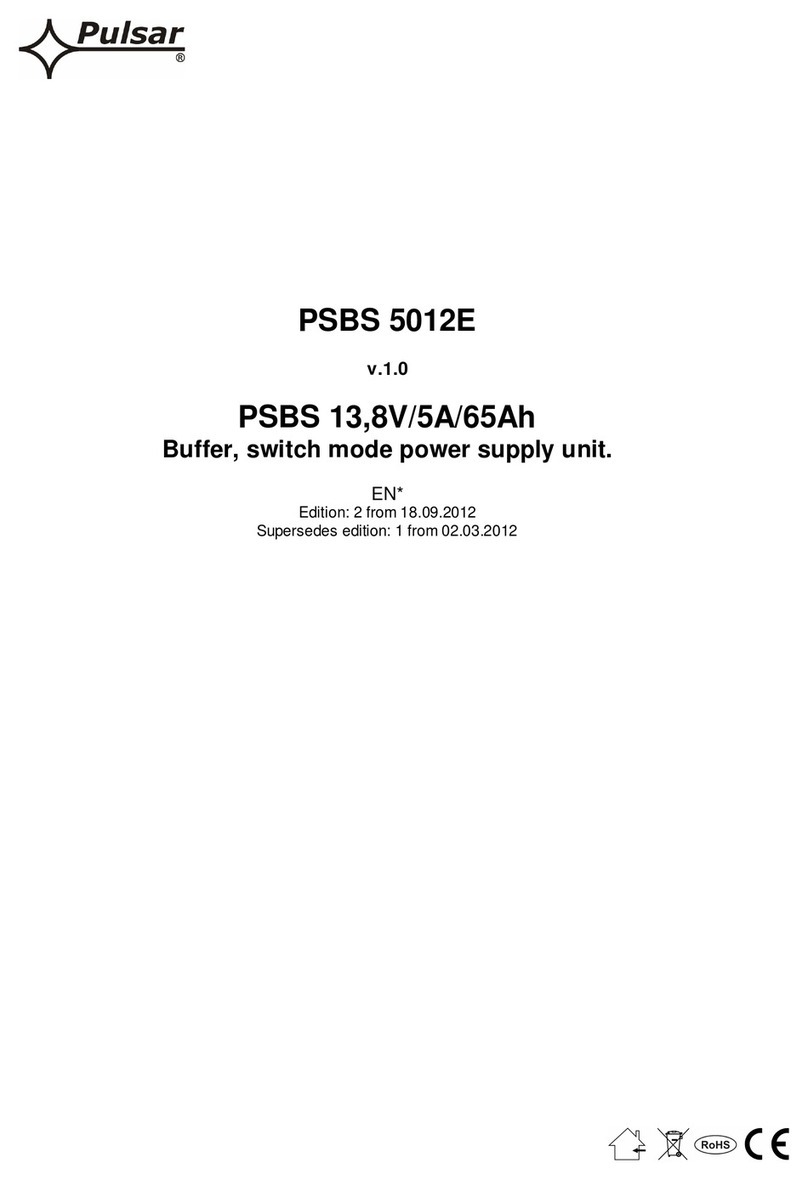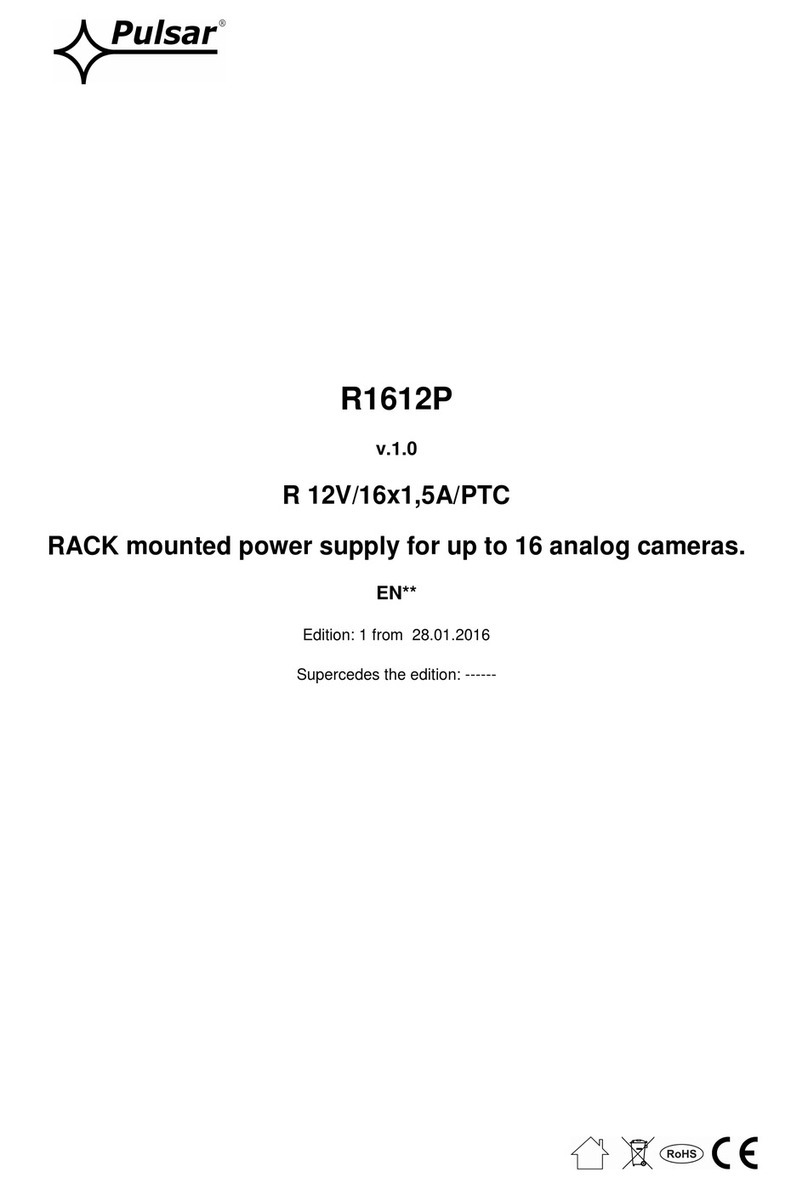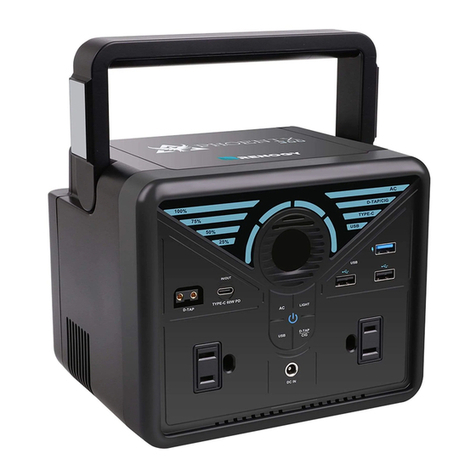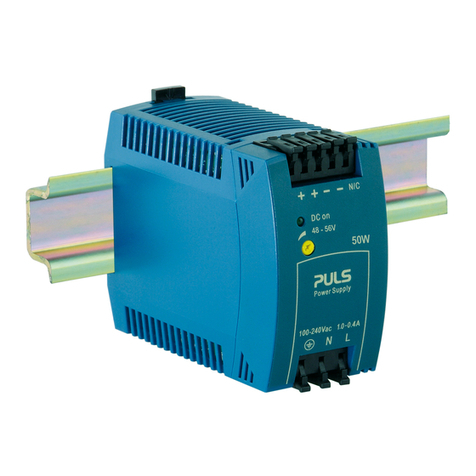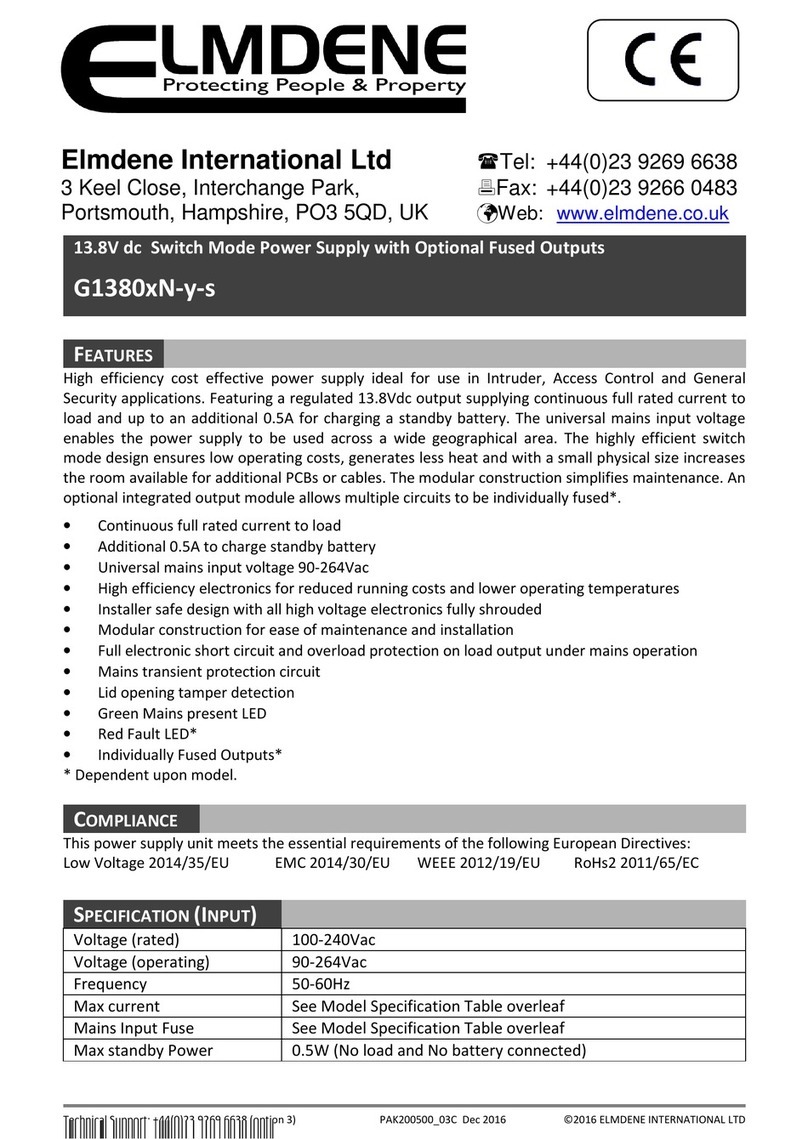
www.pulsar.pl PSBOC1554828
Mechanical specifications (tab. 3).
199 x110 x 50 +23 [mm] (LxWxH) (+/- 2)
power supply, technical outputs: Φ0,63÷2,5 I/O PCB: Φ0,41÷1,63
BAT battery outputs: 6,3F-2,5/40cm,
Led indication output: 3-pin 5 mm connector
Operation safety (tab.4).
Protection class PN-EN 60950-1:2007
Degree of Protection PN-EN 60529: 2002 (U)
Electrical strength of insulation:
- between PSU input circuit and output circuits (I/P-O/P)
- between input circuit and PE protection circuit (I/P-FG)
- between output circuit and PE protection circuit (O/P-FG)
3000 V/AC min.
1500 V/AC min.
500 V/AC min.
Insulation resistance:
- between input circuit and output or protection circuit
Operating specifications (tab.5).
20%...90%, without condensation
Vibrations during operation
Impulse waves during operation
Vibrations and impulse waves during transport
2. Installation.
2.1 Requirements
The buffer PSU is to be mounted by a qualified installer, holding relevant permits and licenses (applicable
and required for a given country) for 230V/AC interference and low-voltage installations. The unit should be
mounted in confined spaces, in accordance with the 2nd environmental class, with normal relative humidity
(RH=90% maximum, without condensation) and temperature from -10°C to +40°C.
The device shall be mounted in a metallic enclosure (a cabinet, an intended case). In order to fulfil LVD
and EMC requirements, the rules for: power-supply, encasing and screening shall be followed, according to
application. The PSU provides voltage of U=54V DC current efficiency:
1. Output current 2,3A + 0,5A battery charging*
2. Output current 1,8A + 1A battery charging*
Total device current + battery charging current: 2,8A max.*
2.2. Installation procedure.
1. Before installation of the power supply unit, make sure that 230VAC power if cut off.
2. Mount the unit in the intended location.
3. Connect the 230VAC power cables. Connect the PE cable (yellow-green) to an appropriate PSU
terminal (marked with - earth symbol).
The shock protection circuit shall be performed with a particular care, i.e. the yellow and
green wire coat of the power cable shall stick to one side of the ‘PE’ terminal. Using the PSU
without a properly made and fully operational shock protection circuit is UNACCEPTABLE!
It can cause a device failure or an electric shock.
4. Connect load/loads to proper output connectors of the power supply (positive pole is marked as +V,
negative pole as -V)
5. Connect the technical outputs to the central or other device.
6. Connect the battery in accordance with the signs (colours).
7. Once the tests and operation control have been completed, the enclosure/cabinet can be locked.
*See chart 1

